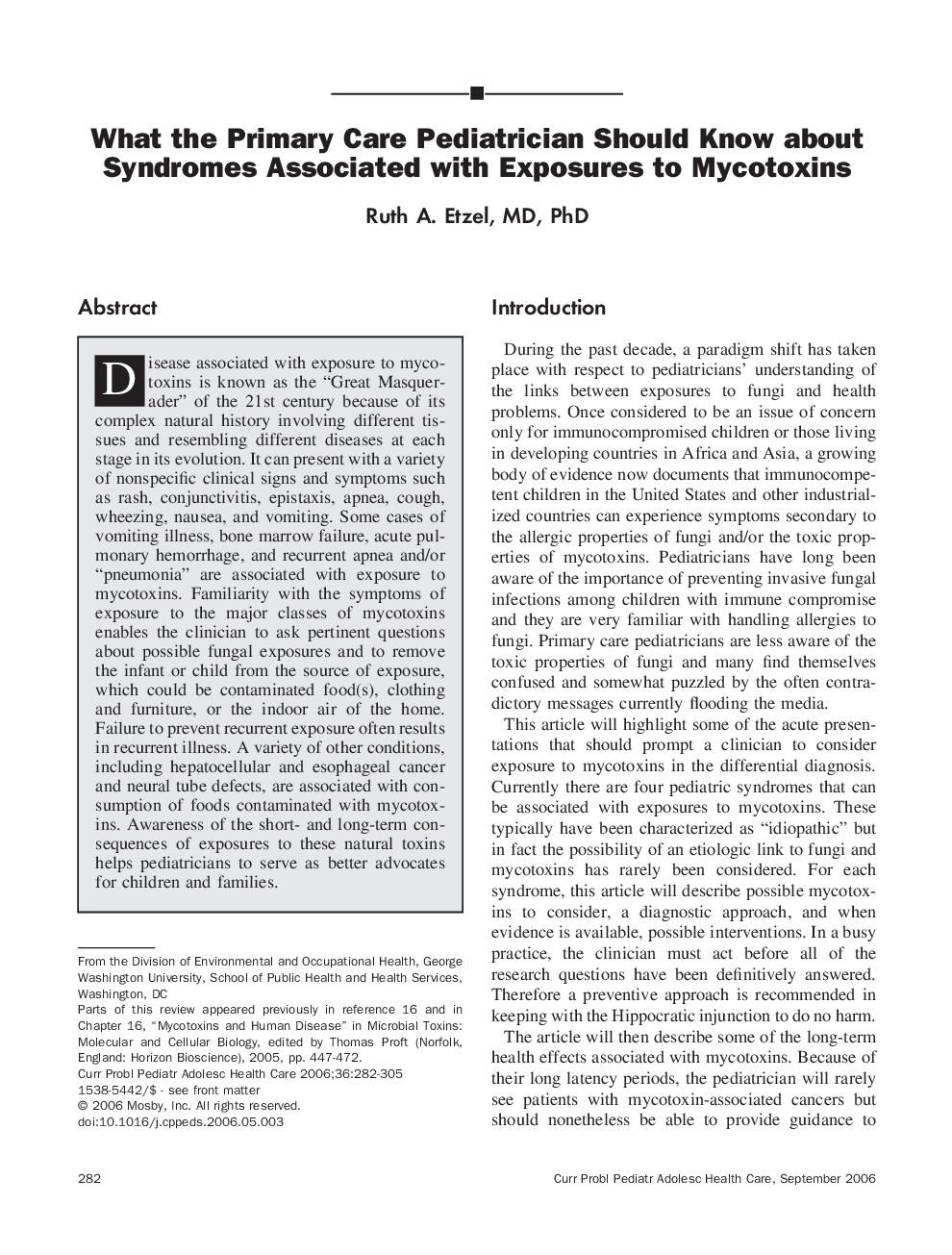| Article ID | Journal | Published Year | Pages | File Type |
|---|---|---|---|---|
| 4153328 | Current Problems in Pediatric and Adolescent Health Care | 2006 | 24 Pages |
Disease associated with exposure to mycotoxins is known as the “Great Masquerader” of the 21st century because of its complex natural history involving different tissues and resembling different diseases at each stage in its evolution. It can present with a variety of nonspecific clinical signs and symptoms such as rash, conjunctivitis, epistaxis, apnea, cough, wheezing, nausea, and vomiting. Some cases of vomiting illness, bone marrow failure, acute pulmonary hemorrhage, and recurrent apnea and/or “pneumonia” are associated with exposure to mycotoxins. Familiarity with the symptoms of exposure to the major classes of mycotoxins enables the clinician to ask pertinent questions about possible fungal exposures and to remove the infant or child from the source of exposure, which could be contaminated food(s), clothing and furniture, or the indoor air of the home. Failure to prevent recurrent exposure often results in recurrent illness. A variety of other conditions, including hepatocellular and esophageal cancer and neural tube defects, are associated with consumption of foods contaminated with mycotoxins. Awareness of the short- and long-term consequences of exposures to these natural toxins helps pediatricians to serve as better advocates for children and families.
